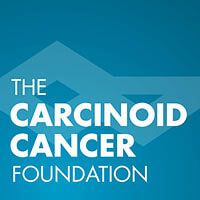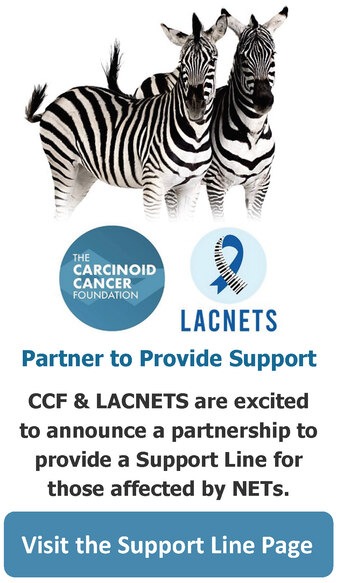Carcinoid Cancer Foundation Presents 2020 Video Series
This series features NET expert physicians throughout the country on a wide variety of topics. The 2020 series is made possible thanks to the generous support of Lexicon Pharmaceuticals; Novartis Pharmaceuticals Corporation; Ipsen Biopharmaceuticals; and The Maryvale Sisters, in loving memory of Sister Mary Norman.
Please sign up for our YouTube channel and get notifications each time we post a new video in the 2020 series as well as other videos throughout the year: www.youtube.com/user/CarcinoidNETs.
The ABCs of Neuroendocrine Cancer: 2020 Update
In the dynamic world of diagnosing and treating people living with neuroendocrine tumors (NETs), four expert physicians discuss everything from the increased incidence of NETs to symptoms of the disease and how to live with NETs for many years. What is unique about NETs? Where do NETs form in the body? What are the most recent advances in imaging and treatment options? Dr. Emily Bergsland, Dr. Pamela Kunz, Dr. Rodney Pommier, and Dr. Edward Wolin provide an overview about this uncommon cancer and offer patients perspectives from key opinion leaders in the field.
Surgery for Neuroendocrine Tumors
Many doctors have historically considered surgery the first and best option for treating a neuroendocrine tumor (NET), when appropriate for their patients. But with all the treatments that have emerged over the past 10 years, as well as new perspectives on treating these tumors, is that still the case? NET experts Dr. Alexandra Gangi, Dr. Rodney Pommier, and Dr. Mark Lewis weigh in on surgery’s role in the treatment process, including: which patients are ideal surgical candidates, when is surgery not an option, at what point in sequencing of treatments does surgery fall, and what new developments have occurred that make the chances of removing a NET through surgery more likely. Dr. Lewis provides a unique perspective on surgery as an oncologist and NET patient who had the Whipple surgical procedure himself!
Lung Neuroendocrine Tumors and DIPNECH
We’re excited to share our newest video on Lung Neuroendocrine Tumors and DIPNECH, featuring NET expert Dr. Robert Ramirez, oncology nurse navigator Pamela Ryan, and NET patient Paige McMurray. What are the symptoms? How are lung NET patients diagnosed, treated, and followed? And what exactly is DIPNECH?
Peptide Receptor Radionuclide Therapy (PRRT)
One of the most significant treatment options for neuroendocrine cancer patients became available with the 2018 FDA approval of Lutathera®, the first radiopharmaceutical for Peptide Receptor Radionuclide Therapy (PRRT). NET experts Dr. Emily Bergsland, Dr. Pamela Kunz, Dr. Erik Mittra and Dr. Jonathan Strosberg describe the treatment, how it works, and the benefits for patients. What do physicians look forward to in the future for PRRT?
Clinical Trials
“Clinical trials are critical for neuroendocrine tumor patients,” says Lowell Anthony, MD. “Until this disease is cured we have to be constantly looking at alternative management.” NET experts Dr. Lowell Anthony, Dr. Aman Chauhan, Dr. Shikha Jain, Dr. Pamela Kunz, Dr. Erik Mittra, and Dr. Robert Ramirez discuss the phases of clinical trials, trials that have brought new treatment options for NET patients in recent years, and how patients can benefit from participating in trials.
Carcinoid Syndrome and Serotonin
When intestinal neuroendocrine tumors (NETs) metastasize to the liver, people can develop carcinoid syndrome, which can also occur with lung, ovarian, and other types of NETs. Dr. Lowell Anthony, Dr. Aman Chauhan, Dr. Shikha Jain, and Dr. Edward Wolin explain carcinoid syndrome and why it occurs, how it can be confused with other health conditions, its impact on quality of life, and treatment options.
Neuroendocrine Tumors in Children
Similar to adults with neuroendocrine tumors, children often have symptoms for years before they are diagnosed with a NET. Common symptoms, such as a bellyache, don’t always mean a common illness. Pediatric oncologist M. Sue O’Dorisio, MD, talks about diagnosing and treating children, telling parents their child has cancer, the advice she gives parents of a children with a neuroendocrine tumor, and what she anticipates the future will hold with earlier diagnosis.
Multidisciplinary Neuroendocrine Tumor Teams
Why are multidisciplinary healthcare teams (MDTs) so valuable for neuroendocrine tumor patients? NET experts Dr. Lowell Anthony, Dr. Joseph Dillion, Dr. Shikha Jain, and Dr. Pamela Kunz explain and discuss how MDTs function.
Neuroendocrine Tumor Guidelines
Neuroendocrine tumor (NET) guidelines are an important resource for both physicians and patients. Assembled by a group of experts, guidelines provide up-to-date, standard-of-care information about diagnosing and treating people living with NETs.
Especially important for rare cancers, guidelines afford community physicians, who may have limited experience treating rare disease patients, a place to access the most recent algorithms for treating patients. For patients, guidelines help them to better understand the treatment options available to them.
The two main sources of NET guidelines in the United States are the NCCN, the National Comprehensive Cancer Network, and NANETS, the North American Neuroendocrine Tumor Society.
NCCN Neuroendocrine Tumor Guidelines for Physicians: www.nccn.org/professionals/physician_gls/default.aspx
NCCN Neuroendocrine Tumor Guidelines for Patients: www.nccn.org/patients/guidelines/content/PDF/neuroendocrine-patient.pdf
NANETS Guidelines: www.nanets.net/net-guidelines-library


